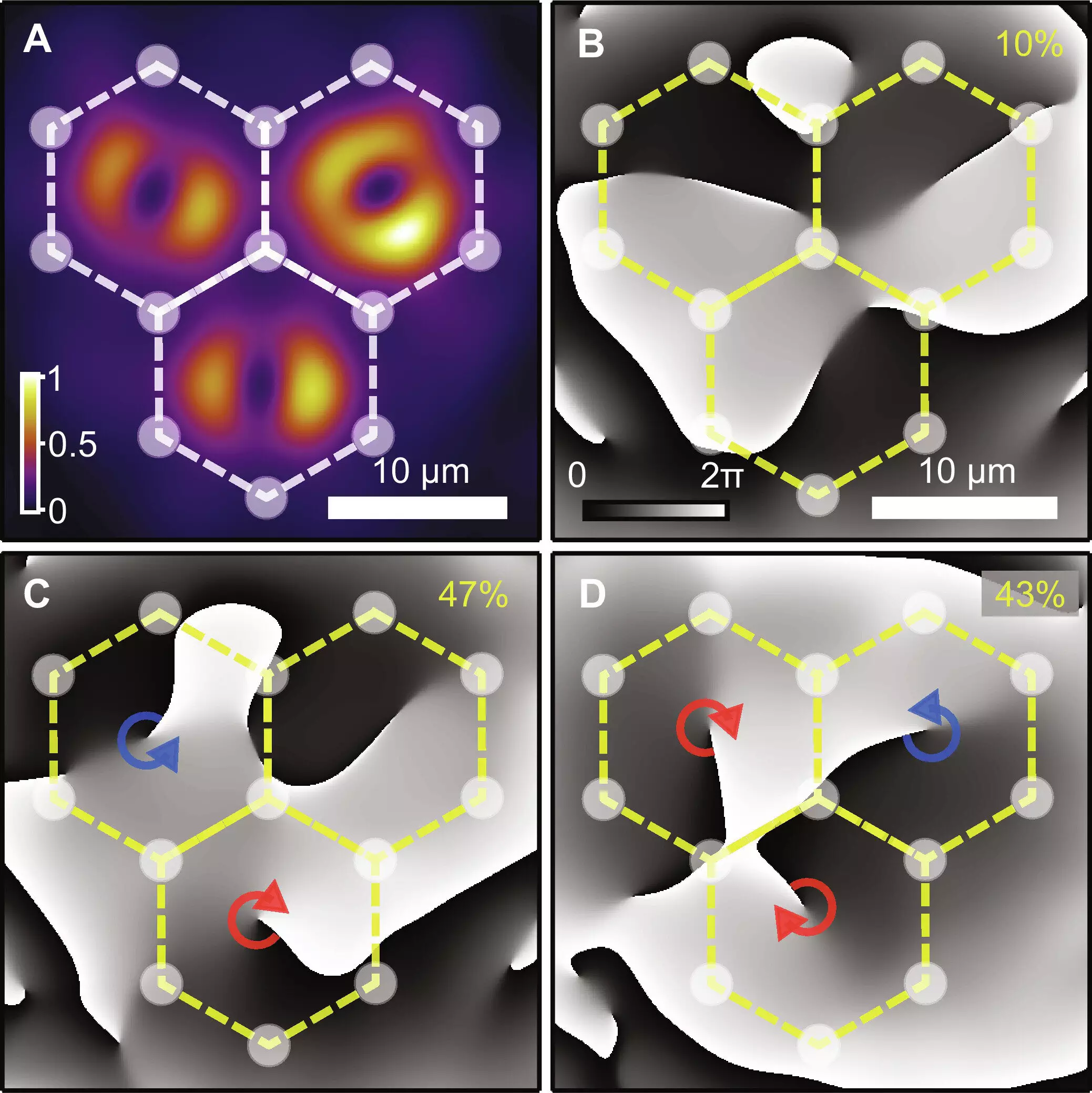The recent research conducted by a team of scientists from Skoltech, Universitat Politècnica de València, Institute of Spectroscopy of RAS, University of Warsaw, and University of Iceland explores the spontaneous formation and synchronization of multiple quantum vortices in optically excited semiconductor microcavities. Their findings, published in Science Advances, shed light on the antiferromagnetic coupling of polariton quantum vortices in adjacent cells of optically induced lattices.
The researchers utilized a semiconductor planar microcavity as their primary experimental setup, employing optical excitation with a laser beam patterned using spatial light modulation. This innovative technique allowed the manipulation of the laser beam into a hexagonal lattice configuration, enabling the formation of quasiparticles known as exciton-polaritons within the lattice cells. The team, led by Professor Pavlos Lagoudakis from Skoltech, conducted their experiments at the Photonics Center’s Hybrid Photonics Laboratory.
Through their experiments, the scientists were able to create a triangular lattice comprising 22 cells with trapped polariton condensates, each exhibiting a single-charge vortex. Surprisingly, the researchers observed that neighboring cells tended to form antiferromagnetically coupled vortices, displaying an opposite topological vortex charge. This unique behavior of the quantum vortices suggests a novel mechanism for the synchronization and interaction of vortices in semiconductor microcavities.
Following the experimental observations, the team faced the challenging task of statistically analyzing a vast dataset to substantiate their findings. Theoretical contributions from Dr. Helgi Sigurðsson from the University of Warsaw added depth to the research, as he delved into the computational modeling of the vortex lattice. By measuring the orbital angular momentum of each condensate within the lattice cells and comparing them with the Ising spin Hamiltonian configurations, the researchers confirmed the presence of extended antiferromagnetic order in the triangular lattice of quantum vortices.
The implications of this research are vast, offering a new platform for studying and simulating condensed matter systems using polariton quantum vortices. The discovery of antiferromagnetic coupling in adjacent vortices opens up opportunities for exploring unique phenomena in driven-dissipative systems. Future studies may focus on expanding the lattice size, investigating the dynamics of larger-scale vortex configurations, and exploring applications of this phenomenon in quantum information processing and quantum computation.
The collaborative efforts of the research team have uncovered intriguing insights into the formation and synchronization of quantum vortices in semiconductor microcavities. By combining experimental observations with theoretical modeling, the scientists have laid the foundation for further exploration of antiferromagnetically coupled vortex systems. This research paves the way for future advancements in quantum optics, condensed matter physics, and quantum technologies.


Leave a Reply